Are “baby bust” headlines sowing misinformation about population numbers and trends?
Written by Olivia Nater | Published: July 7, 2025
For immediate release
Survey: Up to 40% of Americans don’t know that our population is growing
A new survey to mark World Population Day1 (July 11) sheds light on how the new media obsession over declining fertility in the Global North seems to be shaping public knowledge and perception of demographic trends.
Population Connection Vice-President for Communications, Marian Starkey, says,
“Our global population of 8.2 billion and counting is on track to grow to over 10 billion in the second half of this century, which will put ever more strain on our already overburdened planet. Concern over the serious impacts of human population growth used to be widespread, but today’s media seems fixated on the opposite issue: declining birthrates, and what they could mean for the economy.
Our research found that Americans are generally ill-informed about population sizes and trends, which could in part be due to their exposure to misleading headlines.”
Survey findings
The online survey, conducted by YouGov in June 2025 on behalf of Population Connection, polled a representative sample of 2,000 Americans. It revealed that close to a third (31%) of respondents had seen headlines about declining birthrates in the past month, while only one-in-ten (11%) had seen headlines about global population growth.
When asked to guess the sizes of both the US and the global population, only 16% of respondents made guesses that were within 5% of the actual US population (in other words, between 325 and 359 million), while one-in-five made guesses that were within 5% of the global population (between 7.8 and 8.6 billion).
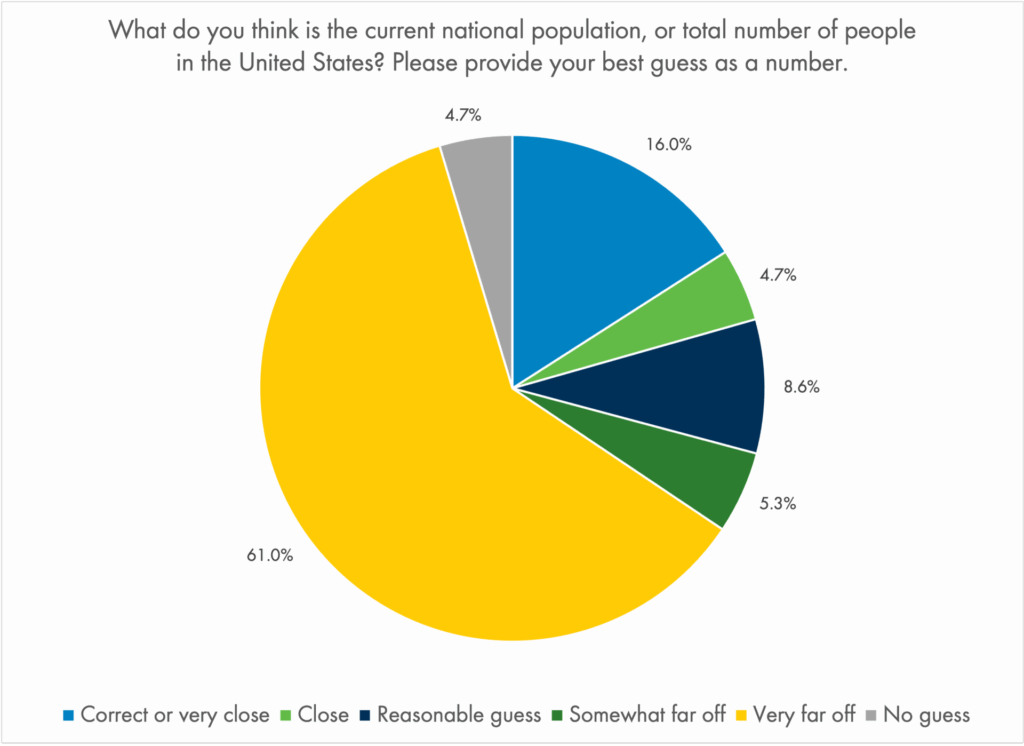
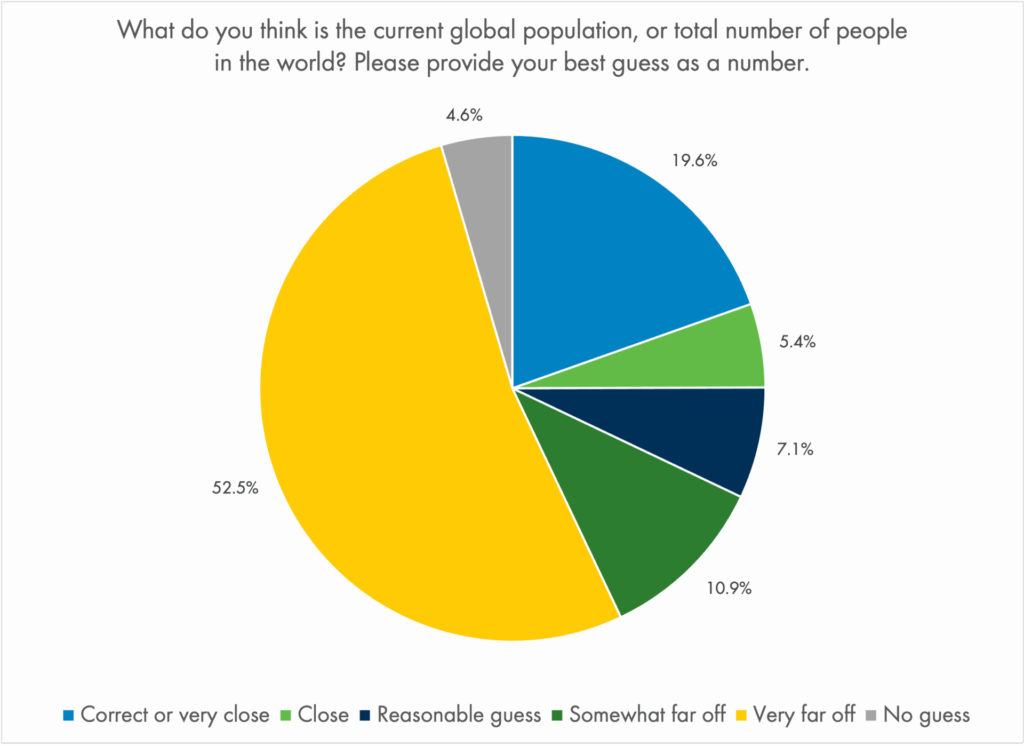
Similarly, fewer than two-thirds of all respondents (61%) knew the US population is still growing. Knowledge was slightly better regarding the global population, with 72% knowing it’s growing.

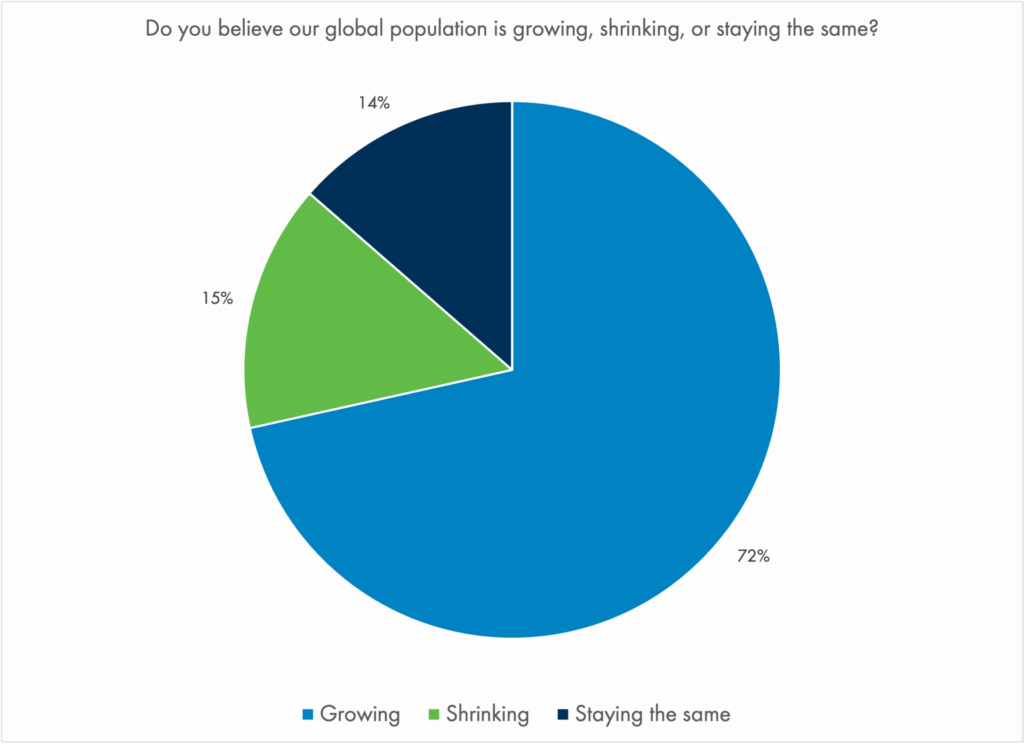
Respondents were also asked how concerned they are about declining birthrates and world population growth. Only a third reported being very to somewhat concerned about global population growth, despite this being a key driver of environmental crises. Concern over low birthrates was even lower, however, with just a quarter of respondents saying they are very to somewhat concerned about this issue.
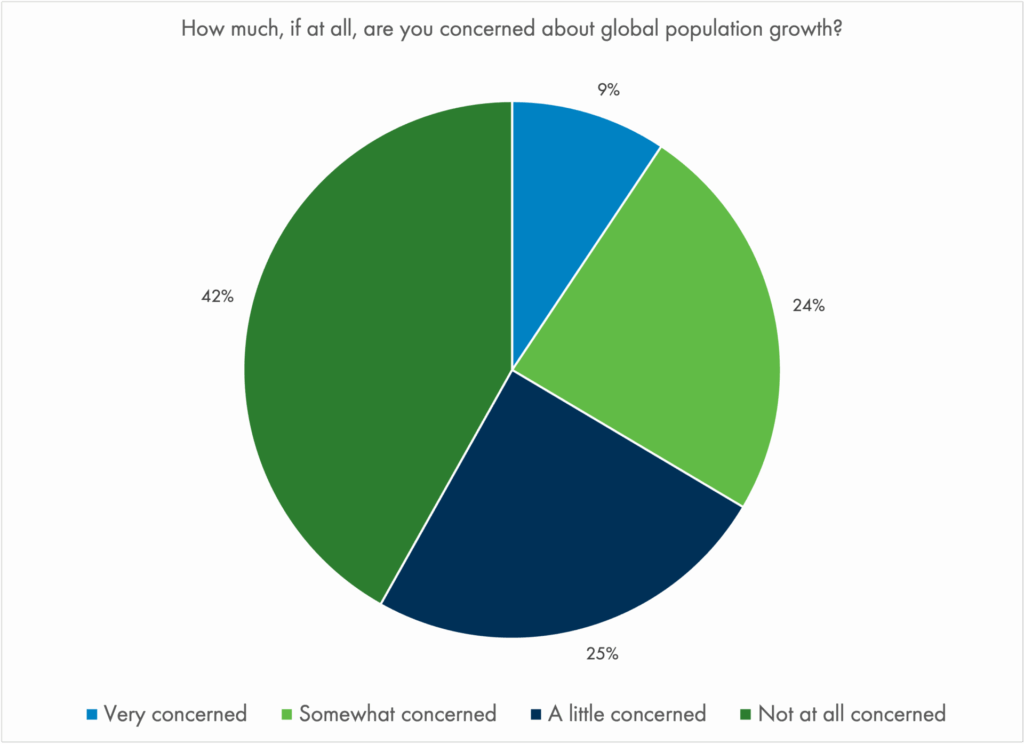
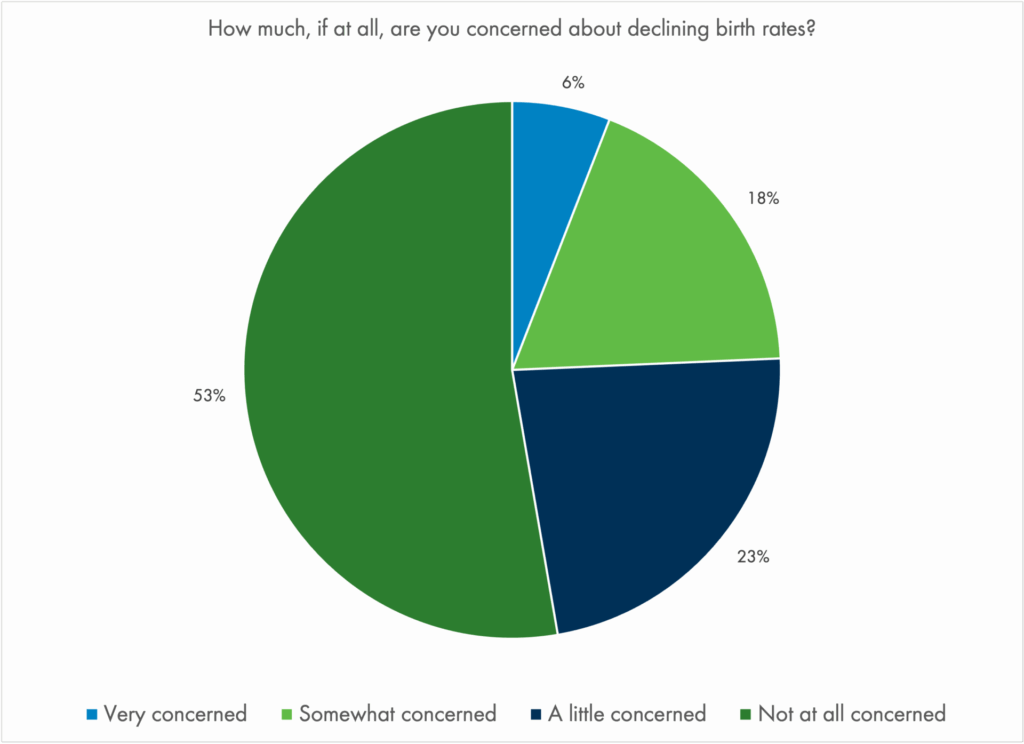
Conservatives were more concerned about low birthrates than liberals — a third (32%) of conservatives said they were very to somewhat concerned, vs. just 17% of liberals. Conversely, liberals reported higher concern about global population growth than conservatives (38% of liberals said they were very to somewhat concerned, vs. 28% of conservatives).
For those concerned about low birthrates, by far the most reported reason was the “erosion of traditional family values / fewer people getting married and having children” (a concern highest among conservatives). For those concerned about global population growth, the top reasons for concern were “more people living in poverty” and “natural resource depletion.”
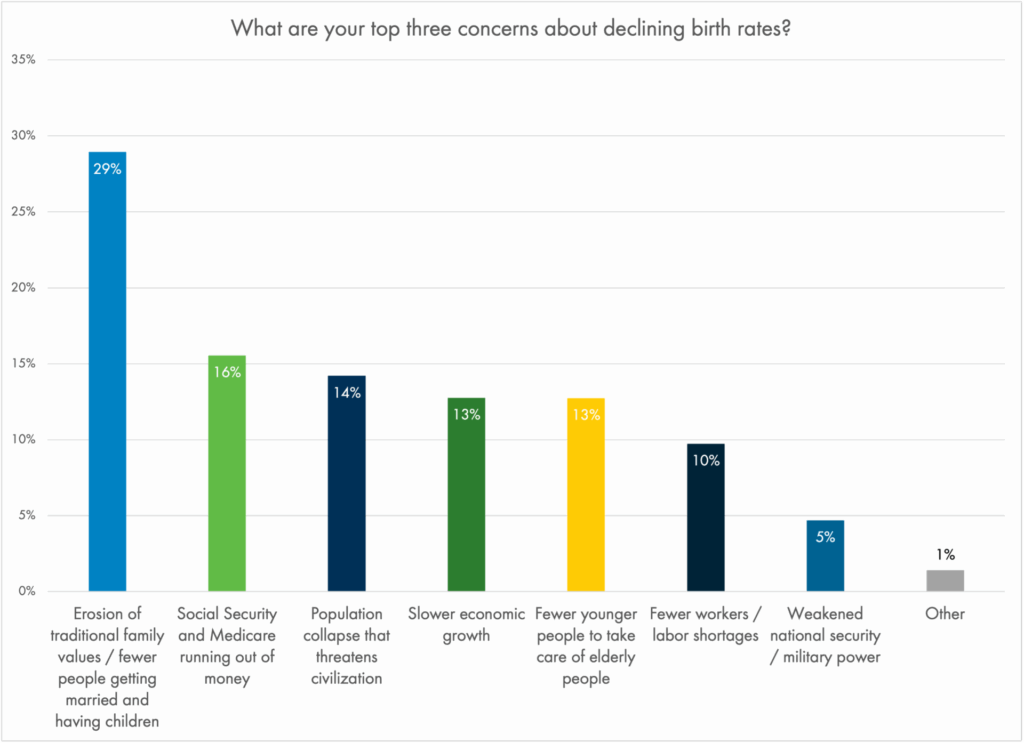
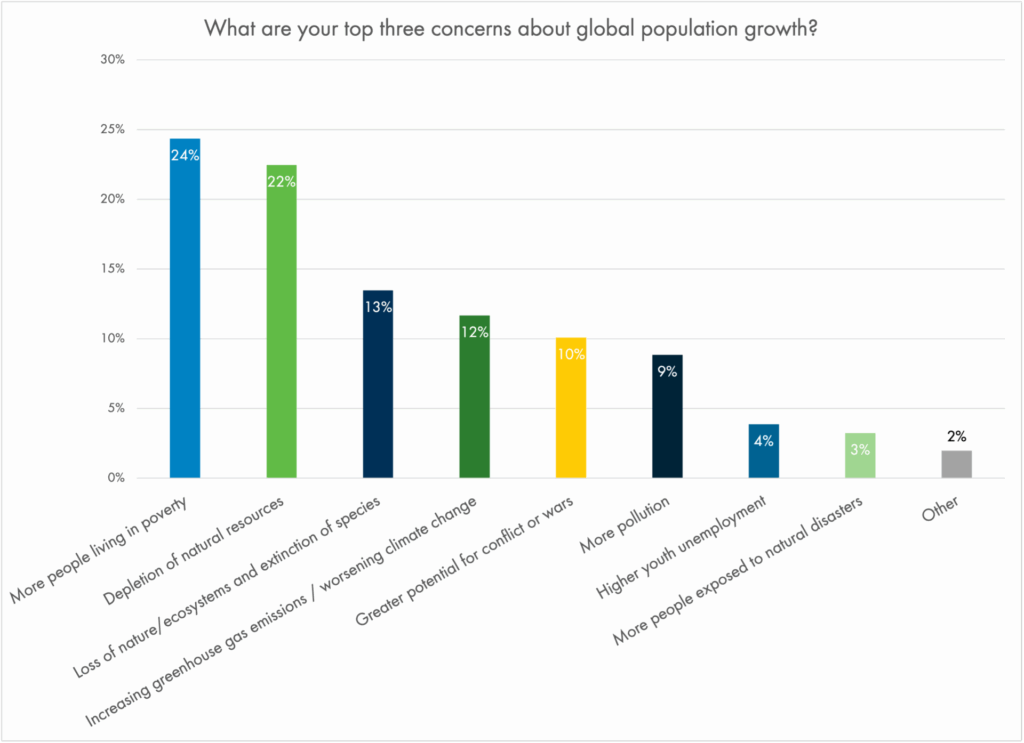
Marian Starkey says,
“It is somewhat comforting that most people are not buying into the unjustified panic over low fertility rates. This is likely related to the fact that environmental degradation from population growth is hard to overlook, while concern over low fertility is still a relatively new phenomenon with largely predicted rather than tangible negative impacts.
Population Connection will continue to raise awareness around population trends and impacts, as well as of the urgent need to invest in empowering solutions to achieve a more sustainable human population.”
A more detailed analysis of the survey results can be found in this blog post, alongside links to the full results tables.
Contact: Olivia Nater, Communications Manager, onater@populationconnection.org, +1 202-974-7739
Population Connection is the largest grassroots population organization in the United States, educating young people and advocating progressive action to stabilize world population at a level that can be sustained by Earth’s resources.
2120 L Street NW, Suite 500
Washington, DC 20037
NOTES FOR EDITORS
1. World Population Day (July 11) is a United Nations observance day intended to focus attention on the urgency and importance of population issues. It was first marked in 1990 in more than 90 countries. https://www.un.org/en/observances/world-population-day/background
Survey methodology:
Between June 13, 2025, and June 25, 2025, YouGov interviewed 2038 respondents who were then matched down to a sample of 2000 to produce the final dataset. The respondents were matched to a sampling frame on gender, age, race, and education. The sampling frame is a politically representative “modeled frame” of US adults, based upon the American Community Survey (ACS) public use microdata file, public voter file records, the 2020 Current Population Survey (CPS) Voting and Registration supplements, the 2020 National Election Pool (NEP) exit poll, and the 2020 CES surveys, including demographics and 2020 presidential vote. The matched cases were weighted to the sampling frame using propensity scores. The matched cases and the frame were combined and a logistic regression was estimated for inclusion in the frame. The propensity score function included age, gender, race/ethnicity, years of education, region, and home ownership status. The propensity scores were grouped into deciles of the estimated propensity score in the frame and post-stratified according to these deciles. The weights were then post-stratified on 2020 and 2024 presidential vote choice, as well as a four-way stratification of gender, age (4-categories), race (4-categories), and education (4-categories), to produce the final weight.

